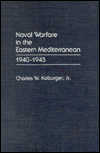Fighting the U-boats
The Lend-Lease Act
In September 1940, President Roosevelt negotiated the famous destroyer-for-bases agreement under which 50 obsolete "four-pipers" US WWI destroyers were exchanged for 99-year lease of several British bases in the Western Hemisphere. This was rationalized that these bases might one day become critical to US defences.
The Lend-Lease Act is born
The Lend-Lease Act was approved in March 11, 1941 by the Congress. This act gave President Roosevelt almost unlimited freedom in directing supplies, tanks, aircraft and ammunition to the war effort in Europe without sacrificing US neutrality at that time. One of the aspects of the Lend Lease Act were SAM ships, Liberty ships lent to Britain.
When the war had ended the Lend-Lease programme had extended over $41 billion in aid to more than 40 nations (some sources say the aid was as high as $50 billion). Britain got the biggest share or roughly $30 billion and the Soviets about $11 billion. China got $1 billion.
Less than $10 billion of that aid was ever repaid, making this appear more like the donation and support it really was.
Lend-Lease assistance to the USSR
Lend-Lease was the most visible sign of wartime cooperation between the United States and the Soviet Union. About $11 billion in war matériel was sent to the Soviet Union under that program. The program started 3 months after the German invasion of USSR in June, 1941.
Additional assistance came from U.S. Russian War Relief (a private, nonprofit organization) and the Red Cross. About seventy percent of the aid reached the Soviet Union via the Persian Gulf through Iran; the remainder went across the Pacific to Vladivostok and across the North Atlantic to Murmansk. Lend- Lease to the Soviet Union officially ended in September 1945.
Joseph Stalin never revealed to his own people the full contributions of Lend-Lease to their country's survival, but he referred to the program at the 1945 Yalta Conference saying, "Lend-Lease is one of Franklin Roosevelt's most remarkable and vital achievements in the formation of the anti-Hitler alliance."
Lend-Lease matériel was welcomed by the Soviet Union, and President Roosevelt attached the highest priority to using it to keep the Soviet Union in the war against Germany. Lend-Lease helped the Soviet Union push the Germans out of its territory and Eastern Europe, thus accelerating the end of the war. With Stalin's takeover of Eastern Europe, the wartime alliance ended, and the Cold War began.


